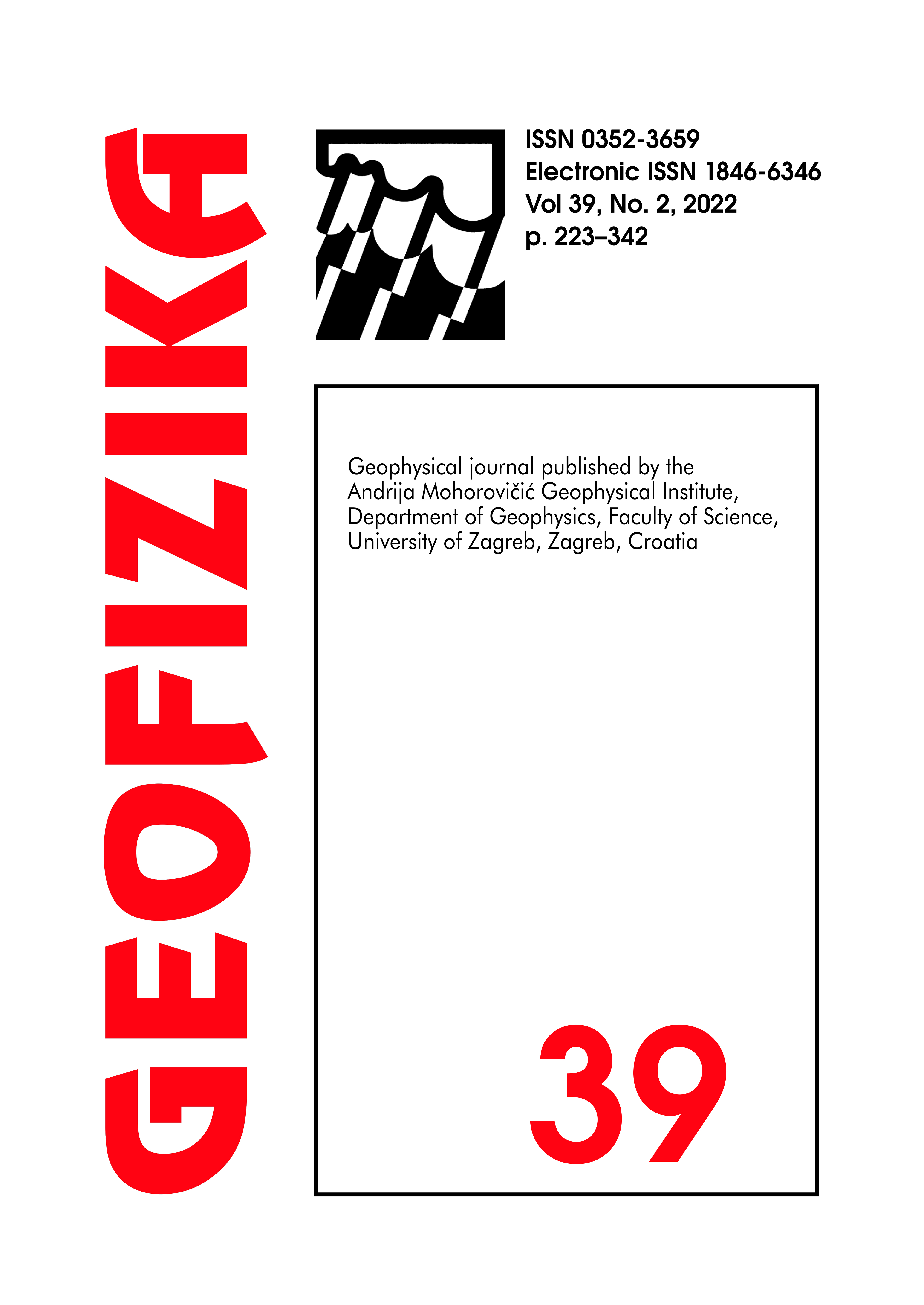Temperature characteristics and heat load in the City of Dubrovnik
DOI:
https://doi.org/10.15233/gfz.2022.39.16Keywords:
temperature, heat load, urban climate, Sen's slope, Mann-Kendall test, climate indices, model MUKLIMO_3, satellite LANDSAT5Abstract
In this study, temperature characteristics and heat load in the city of Dubrovnik are investigated by using temperature data observed at the local meteorological station in Dubrovnik for the period 1961-2019, satellite data collected by LANDSAT5 satellite for the period 2001-2010, and climate indices data obtained from simulations of an urban climate model (MUKLIMO_3) for the period 2001-2010. Trends in daily mean, maximum, minimum, and seasonal temperatures were analysed by using Sen's slope and the Mann-Kendall test. Results reveal rising trends for all of the studied temperature-related elements. However, it is demonstrated that temperature increase is greatest for the summer season with the highest rise for daily maximum temperatures. The same approach was applied to examine trends of climate indices (summer days and tropical nights), which indicates an increase in the number of both summer days and tropical nights. Results of satellite data of average summer land surface temperatures for the period 2001-2010 indicate that urbanised surfaces and bare rock areas heat up more than natural surfaces with vegetation. Climate indices (summer and hot days, warm evenings, and tropical nights) simulated by the urban climate model MUKLIMO_3 also reveal that, on average, in the city of Dubrovnik urbanised surfaces heat up more than natural surfaces with vegetation and that nocturnal heat load is reduced in lower-density built-up areas.
Downloads
Published
Issue
Section
License
Copyright (c) 2022 Geofizika Journal

This work is licensed under a Creative Commons Attribution-NonCommercial 4.0 International License.

